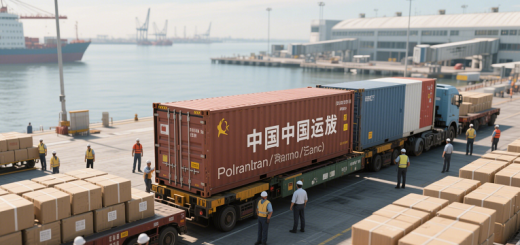How to Efficiently Import Chinese Kayaks & Paddleboards for Auckland’s Outdoor Adventure Tourism (Cost-Saving Consolidation Guide for European & North American Businesses)
Why Import Kayaks & Paddleboards from China?
- Cost Advantage: Chinese manufacturers offer premium-quality inflatable kayaks, SUPs, and accessories at 30–50% lower prices than Western brands.
- Scalability: Custom OEM options for branding, colors, and features to match your tourism niche.
- Innovation: Access to cutting-edge materials (e.g., drop-stitch technology for inflatables) and designs.
Popular Products for Auckland’s Market:
- Inflatable kayaks (portable, ideal for fiord tours).
- Sit-on-top kayaks (durable for rugged coastlines).
- SUP boards (popular for Auckland’s harbors and rivers).
- Safety gear (PFDs, dry bags, repair kits).
The Challenge: High Shipping Costs from China to Auckland
Direct shipping from China to New Zealand is expensive due to distance and low-volume freight. Solution: Consolidation.
What Is Consolidation?
Consolidation involves grouping smaller shipments from multiple sellers into a single container. Benefits include:
- Reduced per-unit shipping costs (save up to 70%).
- Faster transit times (fewer handling steps).
- Simplified customs clearance for mixed cargo.
How It Works:
- Partner with a consolidation service (e.g., FreightAmigo, ShipBob, or specialized outdoor gear consolidators).
- Buy products from multiple Chinese suppliers (e.g., Alibaba, Taobao, or direct manufacturers).
- Send goods to the consolidator’s Chinese warehouse.
- The consolidator ships the combined cargo via sea freight to Auckland.
Step-by-Step Guide to Importing Chinese Equipment
1. Find Reliable Chinese Manufacturers
- Platforms: Alibaba, Made-in-China, Global Sources.
- Tips:
- Verify supplier credentials (ISO certifications, customer reviews).
- Request samples to test quality (critical for safety gear).
- Negotiate OEM branding (add your logo for 0.5–0.5–2 per unit extra).
2. Choose a Consolidation Service
- Key Features:
- Warehouse storage in China (hold cargo until container is full).
- Freight forwarding to Auckland (door-to-door options).
- Customs brokerage support (New Zealand HS code assistance).
- Recommended Providers:
- FreightAmigo: Specializes in small business consolidations.
- MyUS: Offers consolidated shipping from China to NZ.
3. Plan Your Shipment
- Timing: Book container space 2–3 months in advance (peak season: Jan–Mar).
- Documentation:
- Commercial invoice (detailed product descriptions).
- Certificates of origin (for duty reductions under China-NZ FTA).
- Marine insurance (optional but recommended).
4. Navigate New Zealand Customs
- Duties & Taxes:
- Kayaks/SUPs: 5% tariff (HS Code 8903.00 for inflatables, 8904.10 for rigid).
- GST (15%) applies.
- Compliance:
- Ensure products meet New Zealand Safety Standards (e.g., buoyancy tests for PFDs).
- Import permits: Not required for recreational gear.
5. Final Steps
- Receive Cargo: Clear customs at Auckland Port or Auckland Airport.
- Distribute: Resell directly to customers or use in your tours.
Cost Breakdown Example
| Item | Cost |
|---|---|
| Inflatable Kayak | 80–80–120 (OEM) |
| SUP Board | 100–100–150 (OEM) |
| Consolidation Fee | 2–2–5 per kg (min $50) |
| Sea Freight (20ft container) | 2,500–2,500–3,500 (shared among ~10 vendors) |
| New Zealand Duties/GST | ~15% of total value |
Total Landed Cost: ~150–150–250 per kayak/SUP (vs. 300–300–500 for local equivalents).
Risks & How to Mitigate Them
- Quality Issues:
- Inspect samples before bulk orders.
- Use third-party inspection services (e.g., SGS, Bureau Veritas).
- Delays:
- Book shipping during off-peak times (avoid Chinese holidays).
- Choose express lanes for urgent cargo.
- Customs Hassles:
- Hire a New Zealand-based customs broker (cost: ~200–200–500 per shipment).
Case Study: Auckland Kayak Tours
Company: Waitemata Adventures (fictional)
- Challenge: High equipment costs eating into profits.
- Solution: Imported 50 inflatable kayaks and 30 SUPs via consolidation.
- Result: Saved $12,000 vs. buying locally; expanded fleet by 40%.

